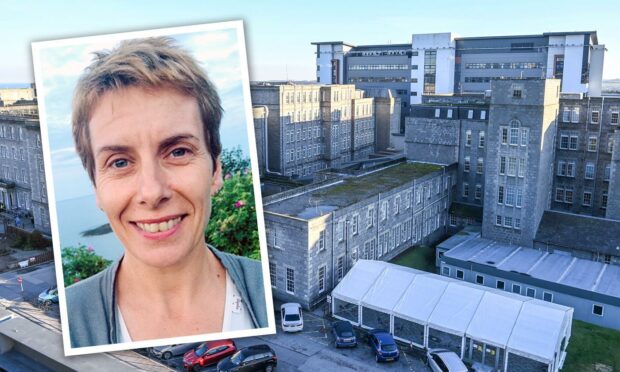NHS Grampian’s head of health intelligence believes face masks should remain available as a “good choice” – even if the legal requirement to wear them is dropped.
Nicola Sturgeon is expected to confirm whether the legal obligation to wear face coverings will be scrapped when she gives a Covid update in parliament on Wednesday.
The first minister eased most remaining virus restrictions two weeks ago but kept mask rules in place due to high case numbers.
Despite cases across the country dropping in recent weeks, creating signs of optimism for a lower threat of infection, NHS Grampian official Jillian Evans still thinks there is a lot of uncertainty.
Hospital admissions reached another record high of 2,360 on Monday as the number of people being treated for the virus has continued to climb for weeks now.
Ms Evans said that although things seem to be moving in the right direction, there is still a risk of infection within communities and face masks should remain as an option.
Speaking to BBC’s Good Morning Scotland, she said: “It’s a very finely balanced judgement on face coverings and we know that if you maintain a legal requirement, you’re likely to have higher compliance.
“Whether or not the decision is taken to remove the legal requirement, it is still a big intervention that’s worth pursuing when prevalence is high and your aim is to try to blunt that transmission.
“I’d say that at the very least – even if the legal requirements are changed – it must be about making things available to people to make good choices.”
Hospital admissions remain high in Grampian
NHS Grampian had the fourth highest number of new Covid cases on Monday, with the health board reporting 775 new cases in the area.
Out of those, 274 were in Aberdeen City, 321 in Aberdeenshire and 128 in Moray.
Ms Evans stressed the number of Covid patients in hospitals also remains high, which continues to have a “knock-on effect” on other services in Grampian.
She added: “According to the strategic framework, it’s [removing the requirement] when the threat begins to be low.
“That’s when you start to look at what’s happening in hospitals because it’s a really good sign, and what’s happening with infections in the community, which is determined by survey data.
“And at the moment we are not turning the corner on that, but let’s hope we will, and I think we will as we go through the spring and into summer.”
